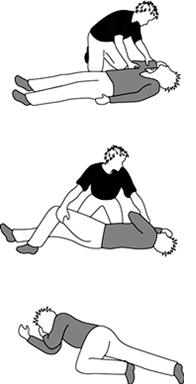Seizure attacks or convulsions are transient events due to abnormal paroxysmal discharge of the cerebral neurons. These can be varied from a full blown generalized seizure where person suddenly falls down unconscious, followed by jerking movements of body, frothing, with loss of bladder and bowel control or on the other hand a very subtle period of loss of consciousness that it may pass unnoticed altogether.
Seizures can be broadly classified in to generalized and partial seizures according to the area involved in brain. These are again reclassified into various syndromes according to the age group affected, patterns of seizures, EEG changes, other associations etc. In certain conditions these tend to occur very frequently despite aggressive anti – epileptic treatment.
Seizures can occur in:
- A patient with epilepsy
- Due to an infection of central nervous system – (e.g. meningitis, encephalitis, brain abscess).
- Following trauma to head.
- Secondary to autoimmune diseases (e.g. SLE).
- Due to Ischemic stroke.
- Neoplasm – (benign or malignant brain tumors or secondary tumor deposits from other sites).
- Due to alcohol or benzodiazepam withdrawal.
- Following Toxin ingestion.
- In hypoglycemic patients.
- Due to electrolyte imbalance.
- Due to uremia secondary to liver or kidney failure.
How to recognize a seizure?
- Episodic disturbances to the level of consciousness or episodic motor, sensory or psychic disturbances.
- Tonic –clonic (i.e. rhythmic) movements of arms and/or legs or rigidity.
- Tongue bite.
- Frothing from mouth.
- Involuntary passage of urine and/or stool.
- Aura just before onset.
In a typical generalized seizure the patient may complain of typical aura just before onset of event, then he will suddenly fall unconscious, eyes rolled up, frothing from mouth, limbs may stiffen first and then will move to and fro rhythmically, sometimes loss of bladder/bowel control may ensue. The event usually may persist for about 3 – 5 minutes and then he will recover spontaneously. After the seizure patient may fall into a sleep or to a lethargic state which is called post – ictal drowsiness. However this picture can change widely according to the disease condition he is having.
It should be emphasized that any seizure persisting for more than 15 – 20 minutes without recovery is critical and require urgent medical attention.
First aid management
- First Stay calm and ensure safety of victim as well as yourself.
- Remove injurious agents that can be harmful to victim (i.e. sharp objects).
- Do not move or disturb patient and help him to lie flat on floor.
- If possible gently place the patient in recovery position (left lateral position) in order to facilitate breathing because they can have airway obstruction due to froth in mouth as well as due to fall back of tongue which may cause brain damage.
Fig 1: Recovery position
- Wait till the jerky movements to settle. Do not restrain movements.
- Check whether the victim carrying epilepsy identity card or MedicAleart™ bracelet.
- After movements stopped turn him to recovery position if you were unable to do so earlier.
- Reassure the patient and wait till the recovery is completed.
- Do not put anything to mouth or do not give food or water till full recovery.
- Give basic life support if he has stopped breathing.
- Call emergency services if seizures last more than 10 minutes, when you are in doubt, if any injuries occurred during the event, if seizure has occurred in water (e.g. in a swimming pool), repeated seizures, first attack of seizure, or if the victim is having breathing difficulty following an attack.
- In absence seizures (brief episodes of silence without loss of consciousness) usually there is no need of first aid measures as other types but need reassuring.
- Advises for the patients
- Always keep a MedicAlert™ bracelet or diagnosis card with you.
- Inform about your disease and actions to be taken in an emergency to people who are working with you.
- Use 2 pillows to prevent suffocation during sleep.
- Do not stop medications abruptly.
- Avoid dangerous situations (e.g. Heights, fireplaces, wells)
- Take good sleep at least 7hrs.
- Avoid allergic foods.
- Avoid alcohol and smoking.
- Maintain a healthy diet.
Consult a psychologist for mental support.

